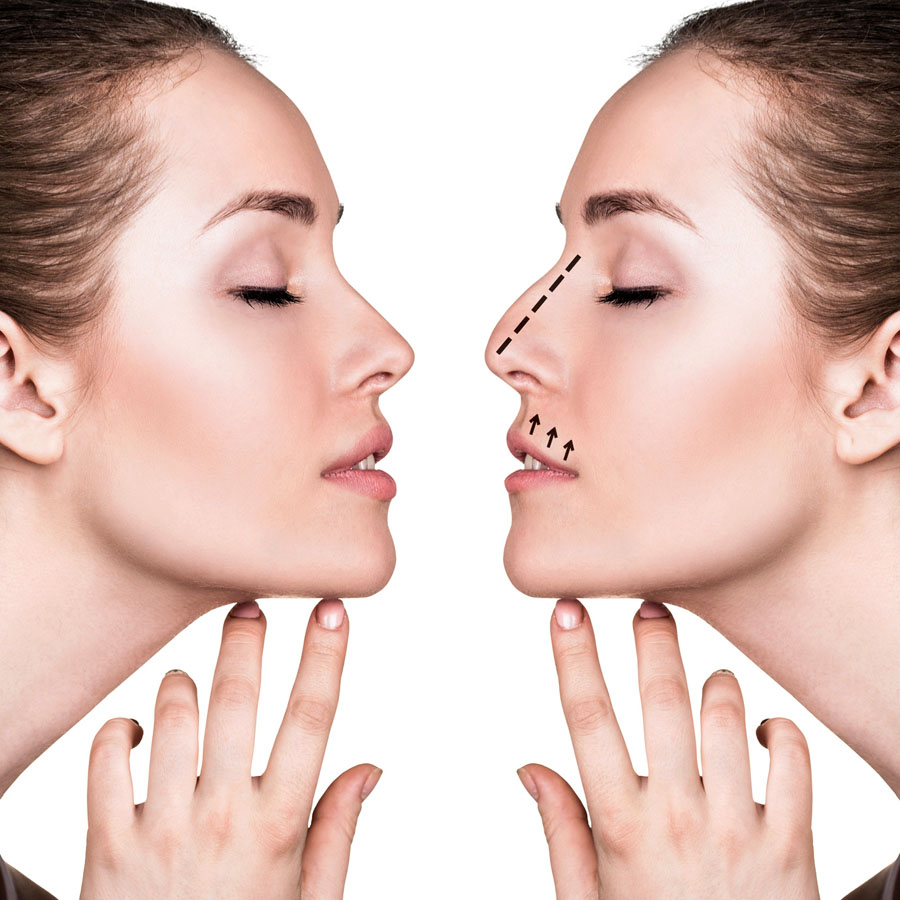02 Jan Reconstructive surgery can improve form and function at the same time
We are used to hearing the media hype about the latest techniques, serums, and celebrities having cosmetic surgery; however, there are equally important and exciting reconstructive
surgery options you should know about that may help you live a more fulfilling and optimal life. The most common reconstructive surgeries are skin cancer revision and nose surgery. And in some cases, a combination of reconstructive and cosmetic surgery achieves maximum results.
Cancer reconstruction
Most skin cancer reconstruction is performed at the time of the cancer removal. If the area is small, the wound may be closed by bringing the edges of the skin together. Another option is to use a local skin flap; the surgeon takes a portion of nearby skin, tissue, and blood supply and repositions it over the wound. For larger wounds, a skin graft may be needed to cover the area. Skin grafts are taken from another part of the body, such as the neck or leg. With complicated or extensive cancer, reconstruction may be delayed until the pathologist can confirm that the tumor has been completely removed.
Cleft lip repair
A cleft is a hole or space where there should be tissue. Children born with a cleft lip may have difficulty eating, breathing, speaking, and hearing. The normal lip has three layers; a mucous membrane inside the mouth, a middle muscle layer, and an outer skin layer. The curve in the middle of the upper lip line that separates the vermilion part of the lip from the rest of the lip skin is referred to as Cupid’s bow. In cleft lip repair, the three layers of the lip must be reconstructed and Cupid’s bow defined. The goal is to minimize the visibility of the scarring so that the repaired lip can look as natural as possible. Lip and palate repair begin usually before the child is three months old.
Nasal reconstruction
A functional rhinoplasty, or nasal reconstruction, may be required to alleviate obstruction to the nasal airways. The obstruction may be caused by a deviated septum, polyp, tumor, or weakened nasal tissue. When someone has a deviated septum, the wall between the two sides of the nose is crooked; this can obstruct the flow of air through the nose. Side effects may include headaches, persistent nosebleeds, and sinusitis. The crooked portions of the septum may be trimmed, straightened, augmented, or removed. Polyps and tumors are surgically removed. If a patient does not have enough cartilage in the septum to support the nose, this weakened nasal tissue can also impede breathing. Your surgeon may decide to build up the nose with a cartilage graft.
Reanimation
Your facial plastic surgeon will create an optimal plan to improve facial symmetry and restore facial animation. This may include one or any combination of procedures, as facial paralysis can cause problems of the eyebrow, eyelid, cheek muscles, and mouth. A brow lift or blepharoplasty (eyelid surgery) can address sagging skin. Implants may be used to fill a depression where muscle tissue has atrophied or been removed. A muscle transfer can improve mobilization and nerve stimulus to the mouth.
Scar reconstruction
The various surgical techniques for scar revision are designed to make the scar as smooth and invisible as possible. This can involve recreating the incision, moving skin around, or even moving the scar to make it less noticeable. A skin flap or skin graft may be used when the main concern is improved function, rather than appearance. Your surgeon will evaluate what technique to use based on the type and location of the scar.
Transplant
This is a not a common surgery. The first, near-total face transplant in the United States was performed at the Cleveland Clinic in 2008. A face transplant is a surgery that replaces part or all of a person’s face; the process is extensive and can take up to three years. Candidates may include individuals with faces severely disfigured due to trauma, cancer, or a birth defect and who have exhausted all other treatment options. Psychological testing is required to make sure a person is emotionally healthy enough for face transplant surgery.
Trauma reconstruction
Facial trauma repair addresses correction of facial fractures or facial lacerations, commonly suffered during motor vehicle accidents, fights, domestic violence, athletic events, animal bites, etc. Traumatic facial fractures frequently involve the jawbone, cheekbone, the eye socket, or the brow and require realignment of the bone segments and fixation for proper healing. Traumatic facial lacerations can cause scarring, facial nerve damage, salivary duct transection, tear duct injury, or even loss of a body part (e.g., ear). The extent of surgeries to repair the face depends on the degree of injury.
Reconstructive surgery can be life changing for many people. Make an appointment with your facial plastic surgeon to discuss what treatments or procedures you should pursue. Be sure to contact your insurance company regarding reimbursement, as reconstructive and medically necessary surgeries are often covered in part or in full.



